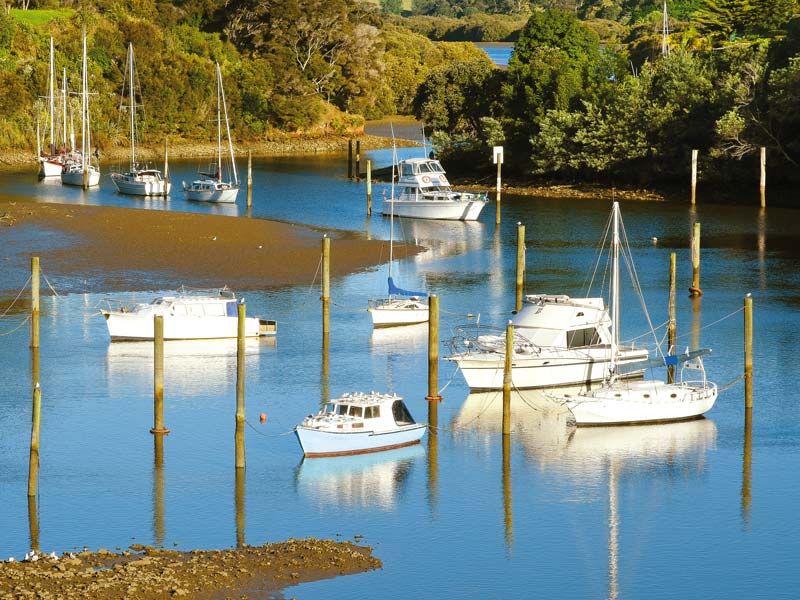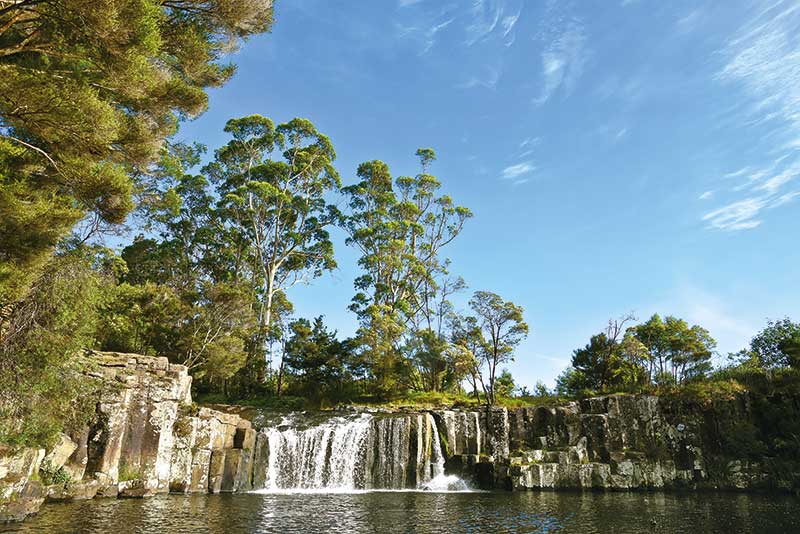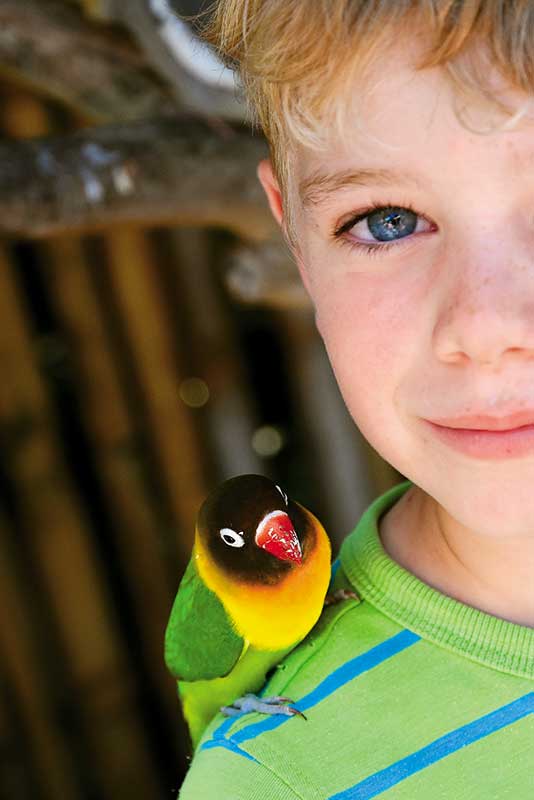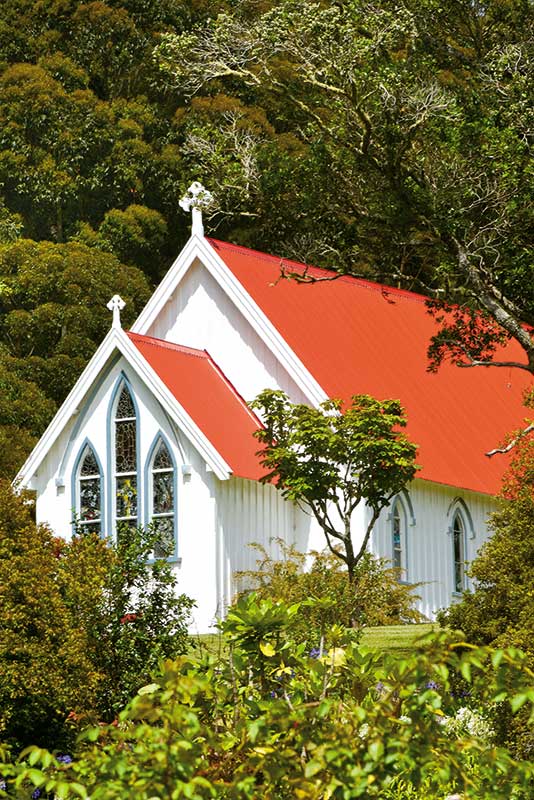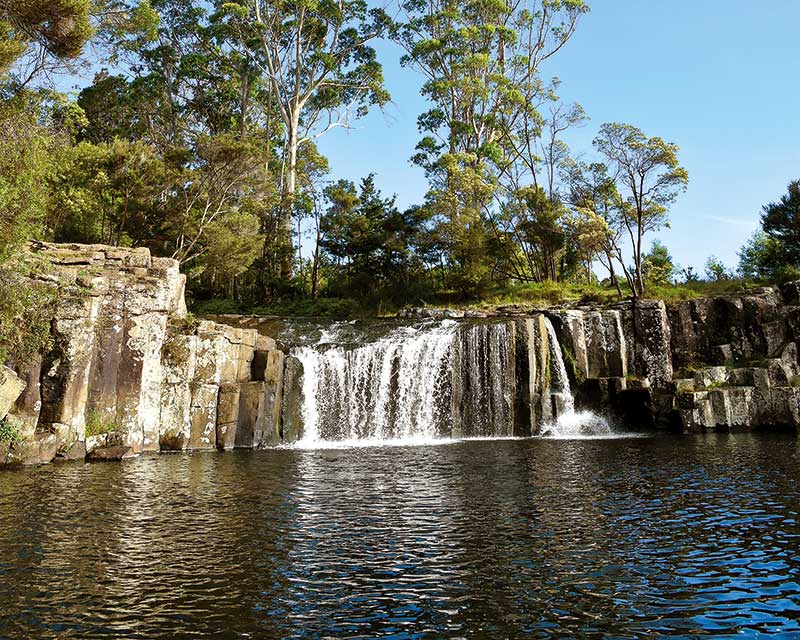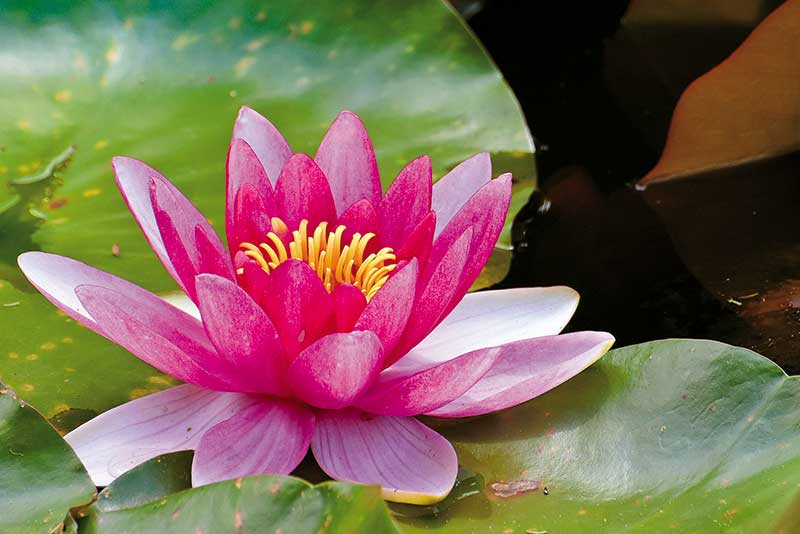Start the morning with something special – a swim at Charlie’s Rock. Let me take you there. We stroll the walkway along the edge of Waipapa Stream for 500 metres. Dew-covered grass strokes our legs, a heron fishes from a rock, welcome swallows flit over shiny water, as do dragonflies, and ducks are happily at home. The stream opens to a large swimming hole made by millions of years and a waterfall. I’m told the water is 18 metres deep.
The rocks that support the waterfall are a curve of interlocking basalt columns, created in an ancient volcanic eruption; here the complexities of geology are both beautiful and unique. The rocks are intriguing, the waterfall pretty and the water cold but, once under, it’s a perfect way to enliven the morning.
I’m still tingling when I visit Kerikeri’s heritage area. The Kerikeri River tumbles over a weir into a tidal tendril of the harbour and, in 1819, the Church Missionary Society established a mission station here in the shadow of, and protected by, Kororipo P, the stronghold of the Ngapuhi chief, Hongi Hika. What is left of this first settlement is Kemp House, the Stone Store, St James Church and a 197-year-old pear tree.
The Stone Store was designed by missionary John Hobbs, and was built by ex-convict William Parrott in 1836. It was intended to house mission supplies but circumstances changed and it became a kauri gum trading store. It was then bought by the Kemp family and was a general store until 1976. It’s now also owned by Heritage New Zealand and is a store again, selling authentic frontier trade goods and classic Kiwiana products.
St. James Church, tucked into trees on the hill above the Kerikeri Basin, opened for worship in 1878. Not much has changed in it since then. I’m fond of heritage churches and this one, with dark wooden interior walls and jewel-bright light though stained-glass windows, is lovely.
The Kerikeri River Track begins where the river enters Kerikeri Basin and ends at Rainbow Falls some 3.5 kilometres inland. Some keen walker has already counted the footsteps (4667) and, as I walk there and back, this evolves to be a many-footsteps day.
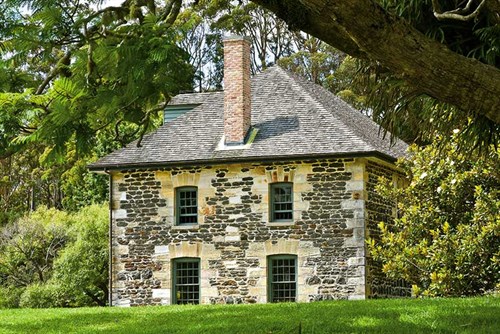
Near the beginning of the track there is a particularly pretty pond covered in water lilies in full flower. It’s an early treat along the path with more treats to follow. The path passes through stands of young kauri, totara and other regenerating native vegetation and is mostly shady, winding its way slowly uphill with the river curling and swirling alongside.
There are interesting rock formations close to the Wharepuke Falls, though they are not as glamorous as those at Charlie’s Rock. I walk up, above the falls, under the new Heritage Bypass Bridge and along the river passing Fairy Pools which, with rocks on one side and low hanging trees on the other, are as pretty as the name implies.
I’m back at the Kerikeri Basin by the middle of the afternoon and though I’ve had enough walking, I can manage a tweety, squeaky, squawky stroll. My next stop is The Parrot Place – a bird zoo with large walk-through aviaries and over 300 birds (mostly parrots).
It is hard to say which is the star of this collection but there are a few who are vying for the title. Elmo, the Mexican macaw, is the biggest bird and the most glamorous. He says hello, has a fine wolf whistle and does a good telephone ring. Pug, an Australian king parrot, and Keith, a South American sun conure, are also brightly beautiful, though less chatty, but are winning the personality contest by sitting on people’s heads and nibbling earrings.
I’m done for the day, though I do summon the strength to drink wine and eat dinner at one of Kerikeri’s many funky restaurants. Jerusalem has Israeli food, which is similar to Lebanese, and is one of a cluster of affordable restaurants whose tables spill-out onto a grapevine-shrouded courtyard. Perfect for those balmy Kerikeri nights.
Saturday morning means market to me and The Old Packhouse Market, just out of town on Kerikeri Road, is one of the best markets around. It’s divided into sections with fruit and vegetables, and other farm produce, plants, health products, sauces and pickles, food-to-go and coffee, art and textiles placed together but in adjoining areas.
Strolling around the market, I fully realise just how much great food there is in Kerikeri and how cheap it is. The area is a hub of organic growers and people who make delicious and imaginative products from the good things that the area grows in abundance.
I can truly see the attraction of this place and understand why people leave Auckland for Kerikeri and its lovely lifestyle.

